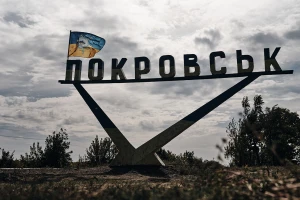
Kakhovka hydroelectric power plant blast is gateway for Russia to destroy more of Ukraine's infrastructure — Portnikov
Journalist Vitaly Portnikov says that a long war may lead to a series of man-made disasters that will make part of Ukraine uninhabitable in the future
He expressed this opinion on Espreso.
“Experts have repeatedly discussed the consequences of blowing up the Kakhovka HPP dam in our broadcasts. We should understand a simple fact: the Zaporizhzhia NPP is not like Chernobyl or Fukushima because it is already shut down. If the NPP is destroyed, the consequences will be different from those at Chernobyl and Fukushima. The explosion of the Kakhovka HPP could have more significant effects compared to an accident at the ZNPP. I believe Russia might follow a similar path of causing disasters. We shouldn't assume that a long war with Russia will automatically lead to the collapse of the Russian Federation. It's important to remember that Russia has already engaged in criminal activities. Destroying the Kakhovka HPP could open the door to the destruction of other infrastructure in Ukraine,” he said.
Vitaly Portnikov added that Ukraine has multiple hydroelectric power plants and nuclear power plants.
“Russia might invade from the north to target the Rivne NPP and cause an explosion there, which would have serious ecological consequences for Europe. Therefore, it is crucial to avoid a prolonged war because it could result in a series of man-made disasters that render a large part of Ukraine uninhabitable in the future. Anticipating the aggressor's actions should always be kept in mind,” he noted.
-
The Russians destroyed the Kakhovka HPP dam on the night of June 6.
-
Energoatom, the energy company, mentioned that this action might have negative effects on the ZNPP, but the situation is currently manageable.
-
On June 7, the mayor's office in Energodar advised residents to evacuate the city due to the possibility of the situation at the ZNPP spiraling out of control.
-
The International Atomic Energy Agency (IAEA) warned that if the water level continues to decline, the ZNPP will be unable to extract water from the Kakhovka Reservoir within two days.
-
However, on the evening of June 8, the IAEA provided initial conclusions from experts. They stated that the Zaporizhzhia NPP should be capable of drawing water from the reservoir to cool the reactors until the water level drops below the critical point of 12.7 meters. The IAEA requested access to the reservoir's water level measurement site and the channel of the adjacent Zaporizhzhia TPP for precise information.
-
On June 9, Energoatom placed the final power unit of the ZNPP in "cold shutdown" mode.
- News












































